The name alone evokes the martyrdom of the ghetto following the April 1943 insurrection. Events here shall remain firmly fixed in the conscience of humanity.
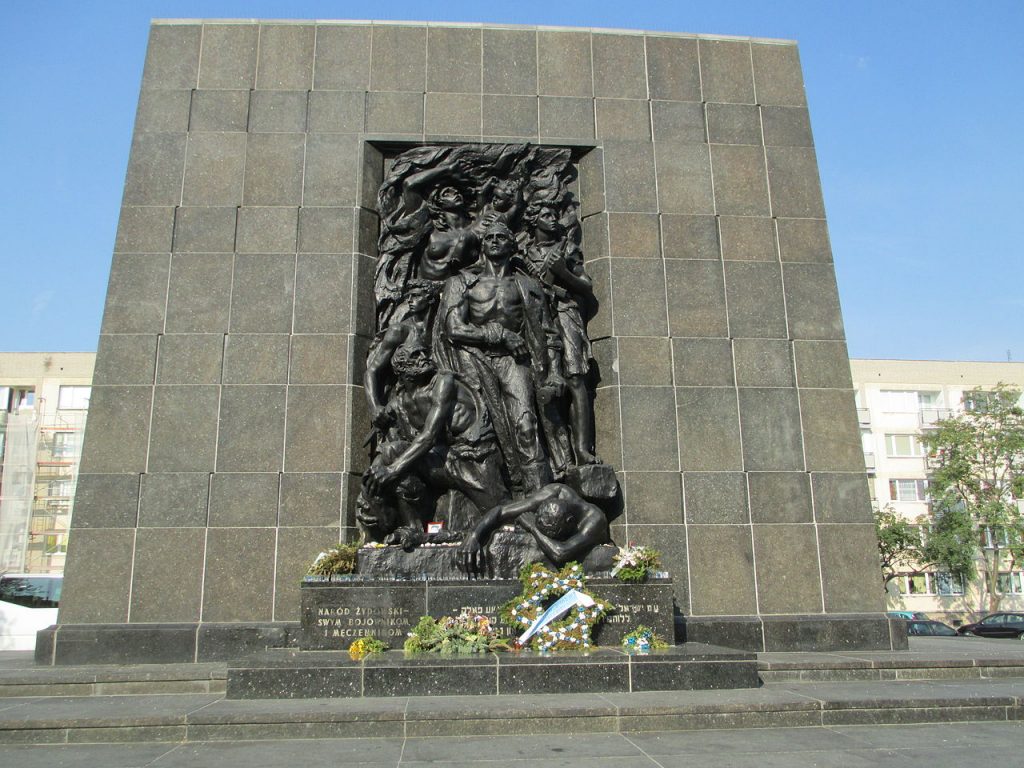
Jews settled in Warsaw beginning in 1414, the year their presence was first mentioned. In 1792, on the eve of Russian domination, they numbered 6750 here, or 9,7% of the population. Their population increased considerably during the nineteenth and early twentieth centuries, when new synagogues, Jewish schools, and a rabbinical school were opened. In 1864, they already numbered 72800 or 32,7% of the population, and in 1917, 363,400, or 41%. Daily newspapers appeared in Yiddish, such as the Yidishes Tageblat. In 1878, the Grand Synagogue on Tlomacka Street was built. In 1939, Warsaw contained nearly 400,000 Jews, a figure that reached 500,000 when the ghetto was created in the fall of 1941, a veritable concentration camp in the middle of the city.
The Germans appointed, as in every ghetto, a Judenrat, at the head of which presided Adam Czerniakow. The ghetto was separated from the rest of Warsaw, the “Aryan city”, by high walls, and it was forbidden for anyone to enter or leave without a pass. Those Jews “fit for labor” (Arbeitsjuden) worked for German businesses (the shops). Food rations were scarce, as the Germans had requisitioned the furs, clothing, gold, and anything else they could get their hands on to sustain the Wehrmacht’s war effort. In a single year, from the summer of 1941 to that of 1942, 100,000 Jews died of hunger, cold, and typhus. Death was a daily spectacle in the streets of the ghetto. Carts passed regularly to collect to corpses. Beginning 22 July 1942, German demands became inconceivable: they ordered Czerniakow to deliver 6,000 to 7,000 Jews each day for a so-called “population transfer to the east” (Umsiedlung).
22 July 1942
“They told us that, with the exception of a few cases, all Jews, regardless of age or sex, would be evacuated to the east. Today we have to hand over a contingent of 6000 people before 4 P.M. And it will be the same, if not more, every day.” [22 July 1942]
Adam Czerniakow, Warsaw Ghetto Diary: 6.9.1939-23.7.1942, Ed. Blumental, Et. Al. (Jerusalem: Yad Vashem, 1968).
Czerniakow understood what the Germans intended and committed suicide. Throughout the summer of 1942, in unprecedented raids the Germans “cleaned out” the ghetto, street by street, driving the Jews to a sorting center called the Umschlagplatz; from there, each morning trains left for Treblinka, only to return, empty, to Warsaw in the evening. In this way, nearly 300,000 Jews were deported and immediately gassed. The deportations slowed, and then picked up again in the spring of 1943, after the Wehrmacht’s defeat at Stalingrad. On 19 April 1943, on Passover day, the ghetto uprising broke out; led by Mordecai Anielewicz, the rebels stood out to their German oppressors for four weeks. It was eventually crushed in the blood and fore of General Stroop’s incendiary tactics. When the ordeal had ended, the latter, victorious, wrote to Berlin: “There is no more Jewish quarter in Warsaw”.
The former Jewish quarter
To understand where the quarter used to be, several days and two maps are needed: the first from the ghetto era, the second a current one. Warsaw’s former Jewish quarter, which corresponded mainly to the Muranów district but extended as far as Swietokrzyska Street (Holy Cross), is unrecognizable today, as it was 99% razed, not one of its houses has survived, as postwar reconstruction transformed the area down to its very street layout and zoning map.

The Grand Synagogue on Tlomacka Street no longer exists. All that remains is the adjacent building, the former Institute of Jewish Sciences, founded in 1920 and today the Jewish Historical Institute . Here you will find a small museum, a library, and archival documents.
The only active synagogue here is the Nozyków on Twarda Street . It was built in 1903 on land offered to the community by Zelman Nozyk. It was restored in the 1980s and returned to the congregation. Services are held regularly, bringing together several generations as well as foreigners and those working in Warsaw. Beside the synagogue, a school for Jewish children has been established, as well as an “information point for Jewish visitors” (Ronald S. lauder Foundation). The editorial offices of the review Midrasz have also been set up here.
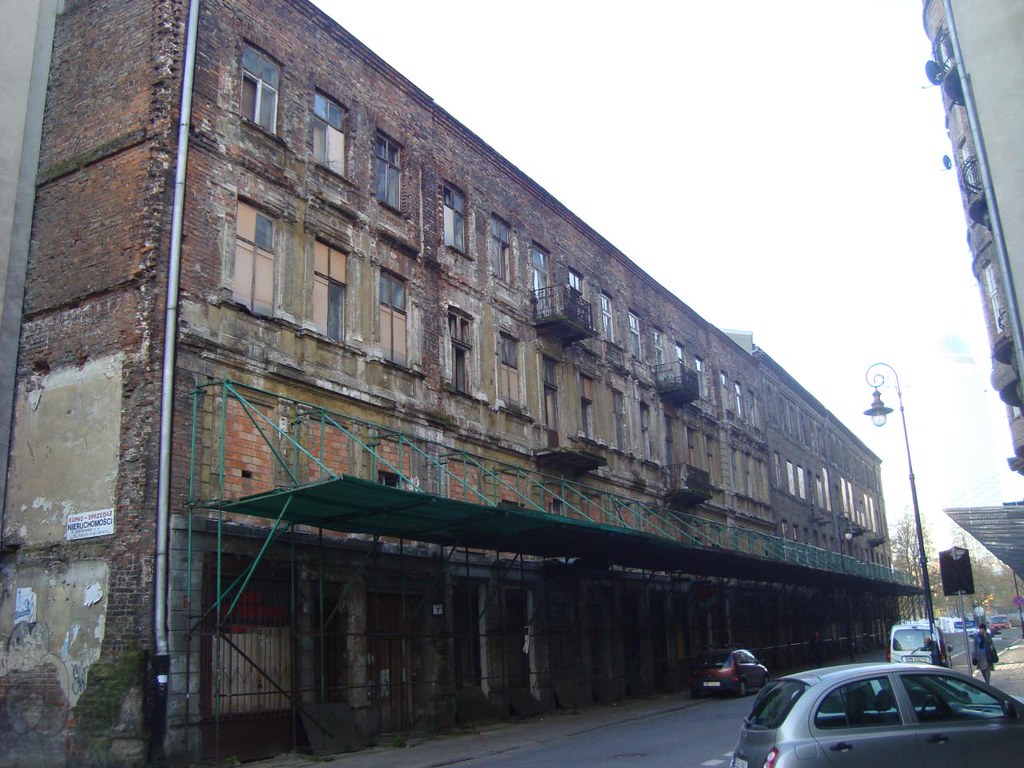
Not far away, in Grzybowski Square, is located the Jewish State Theatre (Panstwowy Teatr Zydowski) , bearing the name of Rachel Kaminska, its 1950 founder. Yiddish-language productions are regularly offered here, covering the entire classical and modern repertory, from Sholem Aleichem, Shalom Asch, and S. An-Ski to Isaac Bashevis Singer, and passing through adaptations of Itzhak Katzenelson’s “Song of the Murdered Jewish People” or evening of Yiddish songs interpreted by Golda Tencer. The Cultural Association of Polish Jews has its headquarters in the same building, alongside the bimonthly Dos Yidishe Vort (or Slowo Zydowske), a small newspaper half in Yiddish, half in Polish. Note as well several houses that appear to date back to the time of the ghetto.
The rebirth of the Jewish quarter
In recent years, the Jewish cultural life of Warsaw is reborn from these ashes. The most obvious sign of this change was the opening of POLIN, the Museum of the History of Polish Jews in 2013. This majestic glass building houses a cultural and educational center, and a museum that offers a permanent collection and temporary exhibitions. The permanent exhibition, which has a thousand years of Jewish history in Poland, covers more than 4,000 square meters and has been designed by 120 academics and researchers.
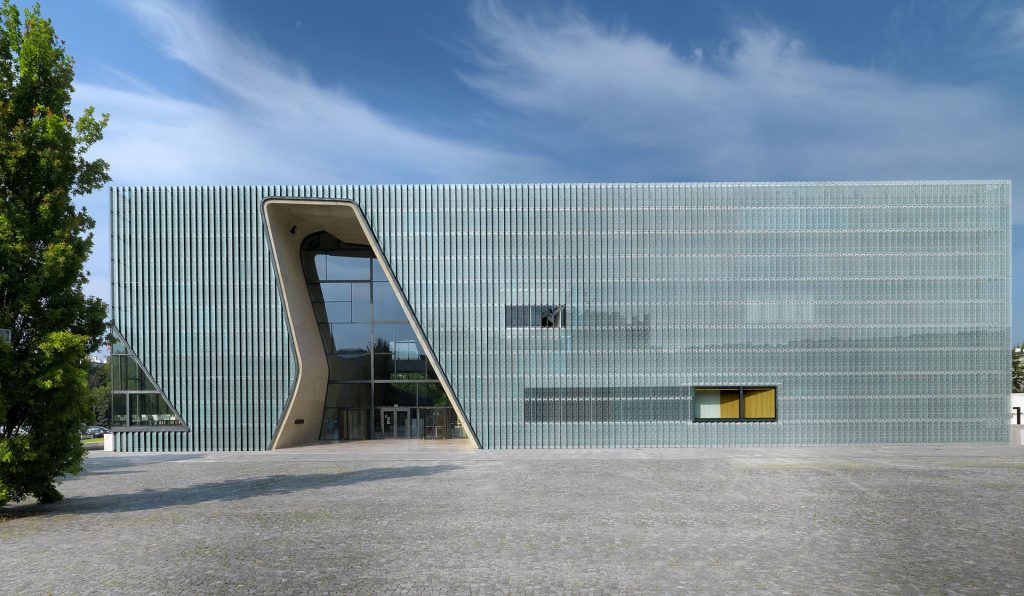
The visit of POLIN takes at least 6 or 7 hours, it is recommended to visit it in two days, as the content of its permanent exhibition is rich and exciting. You can also call on a guide, the visit will last in the case between 3 and 5 hours. Another success of this museum, its restaurant, Besamim (level 0 of the museum) which offers a daring mix of Israeli cuisine, Jewish Ashkenazi and Polish. The kitchen is kosher.
Isaac Bashevis Singer
He was born in Radzymin in 1904 and died in New York in 1991. The Nobel Prize winner for literature in 1978, he was one of the most important Yiddish writers of the twentieth century, in the tradition of Sholem Aleichem and Itzhak Leybush Peretz. A rabbi’s son, he lived in Warsaw until 1933, then emigrated to the United States, where he continued to write Yiddish stories with the life of Poland’s shtetlach and emigration as their backdrop. Nearly all his works have been translated into English.
The ghetto
The ghetto itself was a bit further away.
Take Jana Pawla II (John Paul II) Street and stroll around the Hala Mirowska (Covered Market), where the former ambiance of this populous quarter can still be glimpsed. In the courtyards of houses dating to the 1950s and 1960s, mounds reveal how the field of ruins that was once the ghetto in 1943 and 1944 was never completely cleared away. Take Nowolipe, Karmelicka, Nowolipki, Dzielna, and Pawia and try to imagine how the ghetto once appeared, even if nothing shows through today. Drop by Krochmalna Street as well, where Isaac Bashevis Singer’s novel takes place, In My Father’s Court.
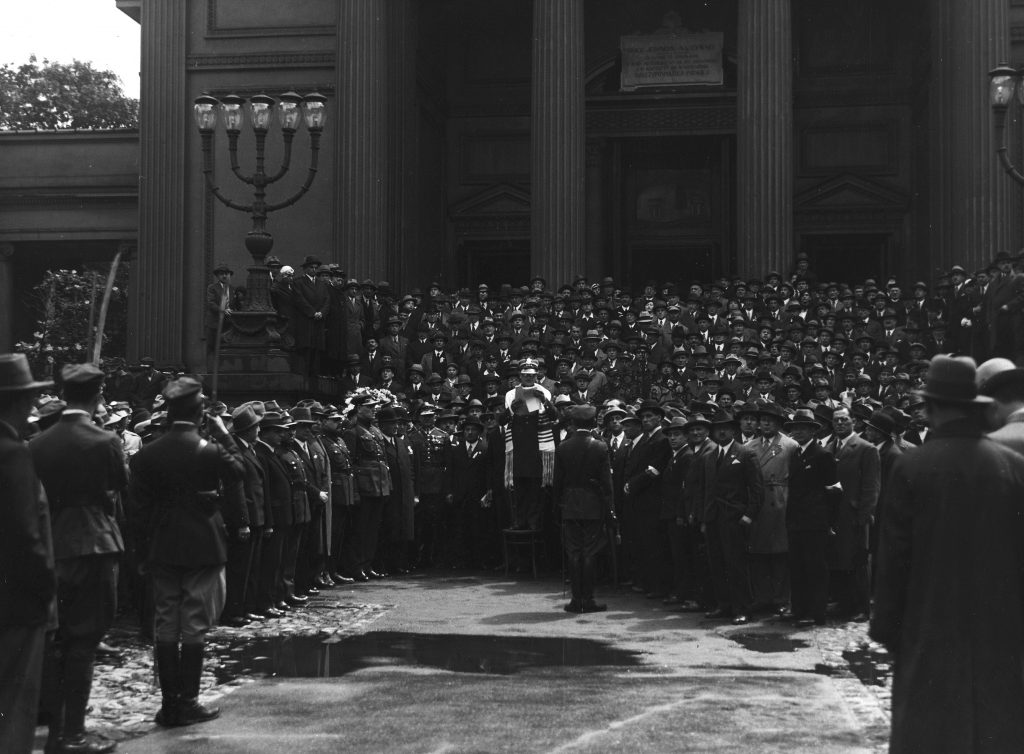
At the intersection of Jana Pawla II and Dzielna streets once stood the Pawiak, a sinister prison where many Resistance fighters were tortured. Further up, the street crosses Mordecai Anielewicz Street (formerly Gesia Street). A right turn leads to a large, undeveloped square, at the far end of which sits the Monument to the Heroes of the Ghetto. Erected in 1948, the memorial features a sculptural group by Natan Rappaport with the inscription, “From the Jewish nation to its combattants and its martyrs”. On the back of the monument, the simple bas-relief is both more moving than the grandiloquent sculpture and less marked by its Stalinist style. In 1972, Chancellor Willy Brandt knelt before this monument, a gesture transcending normal protocol.
Behind the monument, take Zamenhofa Street (named after the Jewish linguist Ludwik Lazar Zamenhof, born in Byalistok and founder of Esperanto), where in 1988 stones were placed approximately every 300 feet representing a “memorial route of the Jewish martyrdom and struggle”. Leading to the Umschlagplatz, the markers evoke the most illustrious names of the ghetto uprising: Jozef Lewartowski, Michal Klepfisz, Arie Wilner (“Jurek”), Mordecai Anielewicz, Meir Majerowicz (“Marek”), Frumka Plotnicka, and Itzhak Nyssenbaum.
At the corner of Zamenhofa and Mila Streets, formerly at 18 Mila Street, was located the bunker where Anielewicz and his comrades led the insurrection, sealed themselves off, and met their death on 8 May 1943. A tombstone has been erected here atop a mound. Along Stawki Street, the past continues toward Dzika Street, with blocks of granite memorializing Janusz Korczak -the writer, educator, and doctor for the Warsaw Jewish orphanage who boarded the train of death with his children when the latter were deported- and Itzhak Katzenelson, the Yiddish poet who miraculously managed to escape the Ghetto and flee to France. After writing his famous “The Song of the Murdered Jewish People”, Katzenelson was handed over to the Germans and deported to Auschwitz.
Mila Street
There is a street in Warsaw, it is Mila Street.
O, tear out your hearts from your chests and put stones there in place of your hearts.
Tear out from your faces your moist eyes and put there shards of glass, as if you had never seen, as if you knew nothing,
Plug up your ears and hear no more -be deaf!
I speak to you of Mila Street.
Itzhak Katzenelson, “The Song of the Murdered Jewish People”, in C. Dobzynski, Le Miroir d’un Peuple, Anthologie de la Poésie Yiddish, (Paris: Gallimard, 1987). See also Itzhak Katzenelson, The Song of the Murdered Jewish People. Trans. Noah H. Rosenbloom (Tel Aviv: Hakibbutz Hameuchad Publishing, 1980).
At 5-7 Stawki Street, a plaque indicates the building where the SS commander oversaw the Umschlagplatz selection, while at numbers 6-8 stood the Jewish hospital where Jews were assembled just before “boarding”.
Just across the street, a 1988 monument, a marble door, commemorates the Umschlagplatz. Engraved on its ten-foot-high hall are 400 Jewish first names repesenting the 300,000 for whom this was their final train platform. The ramps were located right behind the monument, platforms where the cattle cars waited each morning to take their offering to Treblinka. Not far from here sits the Warsaw-Jerusalem restaurant, opened by an Israeli chef.
To get an idea of what Warsaw and the ghetto looked like, you can go to the Warsaw Uprising Museum (that of the city in 1944, not to be confused with that of the ghetto uprising in 1943). The museum does not present much interest in itself, except for a film, recorded by American planes in 1945, which offers the dreadful spectacle of the city, almost completely destroyed, and the ghetto, 99% destroyed.
The Jewish cemetery
The Jewish cemetery on Okopowa Street is both beautiful and impressive, and miraculously avoided destructions by the Germans. Built in 1799 and covering eighty-one and a half acres , it contains around 200,000 graves. A stroll through its alleys among the gravestones and vegetation provides an inkling of the Jewish community’s size before the war. Certain graves stand out, such as those of Ludwik Lazar Zamenhof, actress Rachel Kaminska, and Judenrat president Adam Czerniakov. The cemetery also features a sculpture depicting Janusz Korczak, who died at Treblinka, and a plot dedicated to the ghetto insurgents.
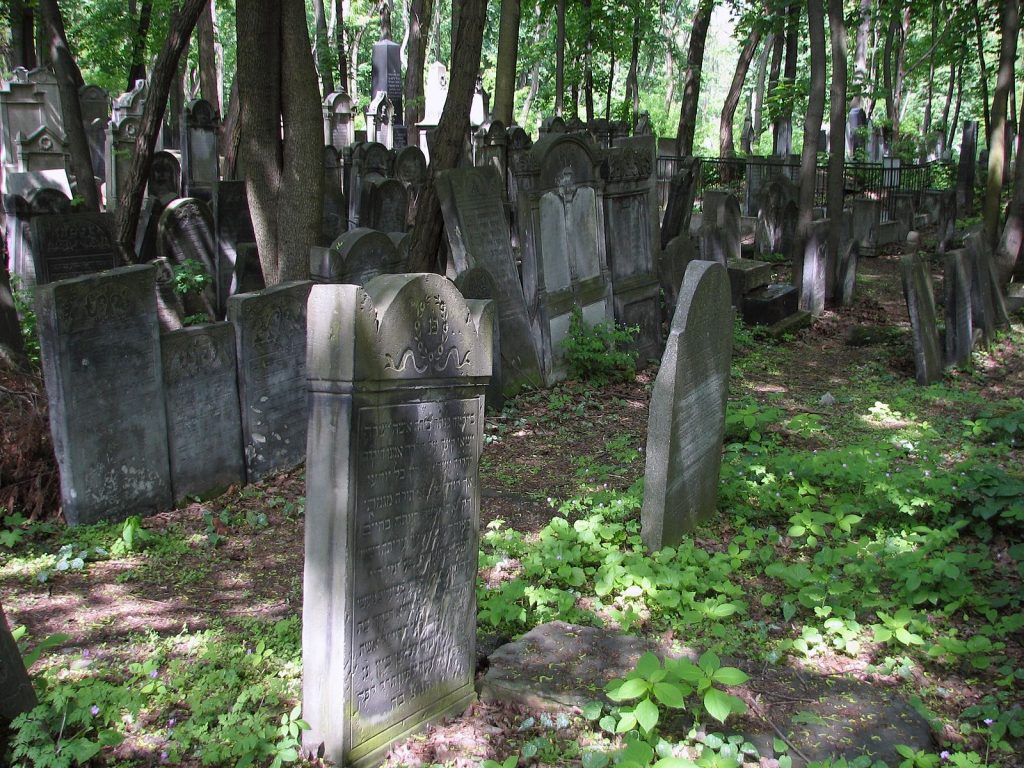
If you are looking for a specific tomb, you can go to the small office at the entrance. However, arm yourself with courage and patience, it is very difficult to find one’s way in the graveyard-which nevertheless adds to its poetry. If you want to gather, be sure to take into account the time you will spend looking for the grave, before the cemetery of the place at 5PM.
In the same way as the Museum of the Uprising, the Katyn Museum is not a place for reflection or specific research on the Jews of Poland, since it honors the memory of 22,000 Polish prisoners of war murdered by the NKVD Soviet in 1940 in the Katyn Forest. However, it is of particular interest to those who want to understand the complex relationship between research on the internal history of Poland and the history of Polish Jews during the war. Indeed, some museum pieces are dedicated exclusively to Jewish soldiers murdered in Katyn – when in fact they were a small minority. Outside the Museum, the Museum Memorial is adorned with a Star of David, side by side with the Catholic Cross.